I met Carrie through a mutual fibro group. When we chatted, she shared that she lives in Taiwan away from her family in Canada. My family lives all over the States but I can’t imagine being a continent away from my family. Continue below for Carrie’s story about her own journey of coping with pain.

Hi Mandy and Michele. Thanks so much for taking the time to feature my chronic pain story. I’m a Canadian expat in Taiwan. I moved to Asia in 2003 and lived in China for three years before moving to Taiwan in 2006. I’ve had chronic pain since I was a teenager.
Carrie ~ Before Carrie ~ After
1. Share the short story of your chronic pain journey. What is your diagnosis? Share some about the journey to this diagnosis.
Like most of us, I thought that the pain I was experiencing after working out or going for a run as normal. In my 20s, my pain started becoming much more noticeable and I attributed it to sports injuries such as shoulder and knee dislocations. Little did I know that those dislocations were a sign of something more sinister at play!
When I brought my pain up with my docs and rehab specialists, especially for my knee injury, they said it was normal. After my recovery, I left for China to teach English. I fell in love with Asia and decided to stay, but during my time there, the pain I was experiencing in my back was getting worse by the day. Some days I’d wake up and couldn’t lift my arm or turn my head.
Most days were miserable, but I put a smile on my face and kept enjoying life in a new country. I am a great pretender. Most people would never know I’m in pain when they look at me.
Problems increase
In 2008, shortly before my wedding, I woke up and couldn’t put any weight on my left foot. We wondered if I’d actually be able to walk down the aisle and again, we chalked it up to sports because I was very active back then.
Two months after my wedding, I woke up again in horrible pain in my legs and back. Both my knees had swelled up overnight, and of course, I thought that I had done something at the gym, so I went out for a walk and was soon calling my husband asking him to come and get me.
In a Wheelchair
The next day, he took me to the ER, and by then, I was in a wheelchair for the first time in my life. This was the first time I remember the pain being so bad, it was intractable. Nothing helped. My knees were huge. The doctors had no idea why there was pain everywhere without a specific reason.
They aspirated my knees and then said they suspected I had either RA or Ankylosing Spondylitis. I tested negative for RF factor, so they went with Ankylosing Spondylitis and sent me to another hospital where they had AS specialists. I received my AS diagnosis, which is a type of inflammatory and systemic spinal arthritis, in February 2009. This made sense because the pain was hitting everywhere in my body, but my spine was on fire from top to bottom.
No One Prepared me For What Was to Come
Finally, I had an answer, but no one prepared me for what was coming.
I was treated at the same hospital for four years successfully. In 2012, I entered remission and I thought, that’s it. Now I can go back to my life!
But soon enough, the swelling returned and by July 2014, my health was a mess, the pain was back and it was much worse, AND my rheumy retired. I really liked him. He was the best rheumy I’ve ever had.
That’s where things took a turn for the worse and I entered the system as a foreign patient in a Chinese health care system being bounced around from doctor to doctor at 37 years of age because ‘no one thought I should be that sick or in that much pain’.
More Diagnoses
In late 2014, I received a Fibromyalgia diagnosis and an MECFS diagnosis and they started treating all three. And of course, once you have one autoimmune disease, they just keep piling on. Soon enough, I was having GI problems, eye problems, heart problems… There was no part of my body left unaffected.
I lost everything – my career in music, my job, my ability to move or go to the gym, friends, family; it was utterly devastating. And on top of this, I had this never-ending intractable pain that has severely impacted my mental health with no options here for assistance in coping with what I am going through.
At 45 years of age, I honestly can’t remember a day now without pain. I can’t even imagine what a day with no pain feels like anymore.
2. Throughout this time, how were you impacted emotionally?
Like most chronic pain patients, at some point, we learn that there are positives to living with pain. Those positives help to offset the negatives that we go through by living in pain.
I’ve found that my personality has changed. I’m still friendly but much more reserved. Because of the pain, I’m scared to let anyone touch me because it hurts. I’m not the social butterfly I was before I got sick. I’ve had to learn what my limitations are and work hard at acceptance. I’m not as impatient. I’m better at waiting things out. (Because we have to wait for acute flares to end at some point.) I’m definitely more compassionate, and resilience – we all build resilience when we’re coping with issues that impact our lives so severely.
Coping with Pain ~ Indoors
I’m mostly housebound, but I’ve found wonderful ways to keep myself occupied at home. If you had told me 20 years ago that I wouldn’t be able to leave my house much, I would’ve laughed and said impossible.
Now when you enter my home, you can see that I’m a very active indoor gardener and there are art projects and books everywhere. One of the best pieces of advice I can give to patients who are newly diagnosed is to get those rainy day projects ready and keep adding to them. Having projects to work on helps immensely with coping. Also, build your support network because you will need it. Make sure to reach out to other patients. It’s other patients who have kept me updated or informed or who have sat up with me late at night when I can’t sleep because of pain.
3. How do you find comfort on especially painful days?
On days where I am able to move, but I can’t leave my house, I enjoy indoor gardening. I also practice ikebana, the art of Japanese floral arranging, which is a really zen activity that isn’t too demanding. If it’s not too bad, like today, I’ll sit up and write.
I love art and do all sorts of art projects. Art has had a huge and massively positive impact on my life. I can illustrate how I’m feeling through art, and it’s also a great coping technique to get your mind off the pain.
On days that I’m stuck in bed, I rely on the usual: Netflix, art, reading, music, and playing with my cats.
A comforting soak in the bath
Hot magnesium baths help a lot to ease sore achy muscles, so I try to soak three times a week. Any patient who contacts me for info, the first thing I mention is to get in the water and soak. Do it as much as you can. At first, I felt lazy and didn’t want to spend 30 minutes sitting in the bath, but eventually, it turned into something I genuinely enjoy doing and it’s excellent for my health. Hot baths also help me relax and sleep better. My home spa cocktail is:
- 1 cup of Epsom salts,
- ¼ cup of magnesium chloride flakes,
- a squirt of sweet almond oil, and
- a few drops of my favorite essential oils, like jasmine, lavender, or ylang-ylang.
4. What are some things that your family and friends do that bring comfort in your pain?
I live abroad while my family is in Canada, and I got sick over here, so my family isn’t here to help. My mom calls a lot. I don’t know what I’d do without her. I have found I withdraw during super painful episodes, and she’s always there are the end of it so we can chat and catch up. It must be terrible having a child so sick and so far away. I feel so guilty being over here, but honestly, this is where I need to be specifically for healthcare and because my business is here.
As for my friends here in Taiwan, they have all seen me go from a vibrant, active, contributing member of the expat community to someone who is sick all the time and very rarely leaves home. I lost a lot of friends who couldn’t cope with having a friend that never gets better, but the friends that have stayed in my life are so supportive. I am endlessly grateful to these people that try so hard to understand my life.
They record silly videos for me or they’ll call from certain events so I can see what’s going on. Some of them drop by for a visit if I’m up to it. I tend to be really private at home though. I don’t usually encourage visitors unless I haven’t seen anyone for months. Sitting up with people in my home is just as exhausting as it is outside my home. I feel pressure to smile and pretend it’s not that bad because I don’t want them to feel uncomfortable.
My online friends who are also sick – the support I receive from them is never-ending and that is such a blessing in my life. I’ve had pen friends all my life, but social media makes it much easier to stay in touch and share. With friends around the world, someone is always up and willing to chat if I need them. I’m also in a few support groups that I admin where we ensure that someone in the group is always online to help others in need.
Sometimes all we need is someone to commiserate with or to hear from someone who understands exactly what you’re going through.
5. Are you involved in any ministries or community service to reach out to others with chronic pain? Share about this.
I’ve been involved in community service since my 20s in every country I’ve lived in. I’ve recently left the Canadian Chamber of Commerce in Taiwan because I’m too sick now to attend events in person, but I participate online. I’m also part of an active community of approximately 3,000 women in Taipei that I’ve been a part of for the past five years. It’s a great group of girls!
Finally, I’m very active in health advocacy and online awareness. I’m an admin for a massive group of women with fibro and AS. I’ve done that for five years and have made strong friendships within the group. My Several Worlds has been listed as a Best Blog in Fibromyalgia with Healthline for the past three years, and I’ve been recognized as a finalist with WEGO Health in 2020 for their Lifetime Achievement Award. I’m thrilled because I pour a lot of energy (and heartbreak) into my website.
I’ve been writing about this journey since 2009 at My Several Worlds. Feel free to stop by and have a read through the 800+ articles I’ve written for my readers.
My goal in Taiwan is to create a safe space for people in pain where they can meet and talk about their pain. Taiwan does not offer much in the way of support for patients in pain, or the mental health issues that come with coping from daily trauma.
6. Offer some words of encouragement to those who may be searching for comfort in their own chronic pain journey.
- There is always someone out there who understands and gets it.
- You are never alone.
- Get involved with online support groups.
- Educate yourself and read as much as possible to better understand how you can live with and cope with your pain.
- Talk about your pain.

A story about chronic pain is best told from a patient’s perspective. I’m always here to listen and support as needed.
Find creative project to Combat your pain #chronicpain #fibromyalgia Share on X a Chronic Interview with Carrie Kellenberger Share on XThanks so much, ladies! You can also catch up with me on my public
I look forward to meeting you and getting to know you!
Carrie
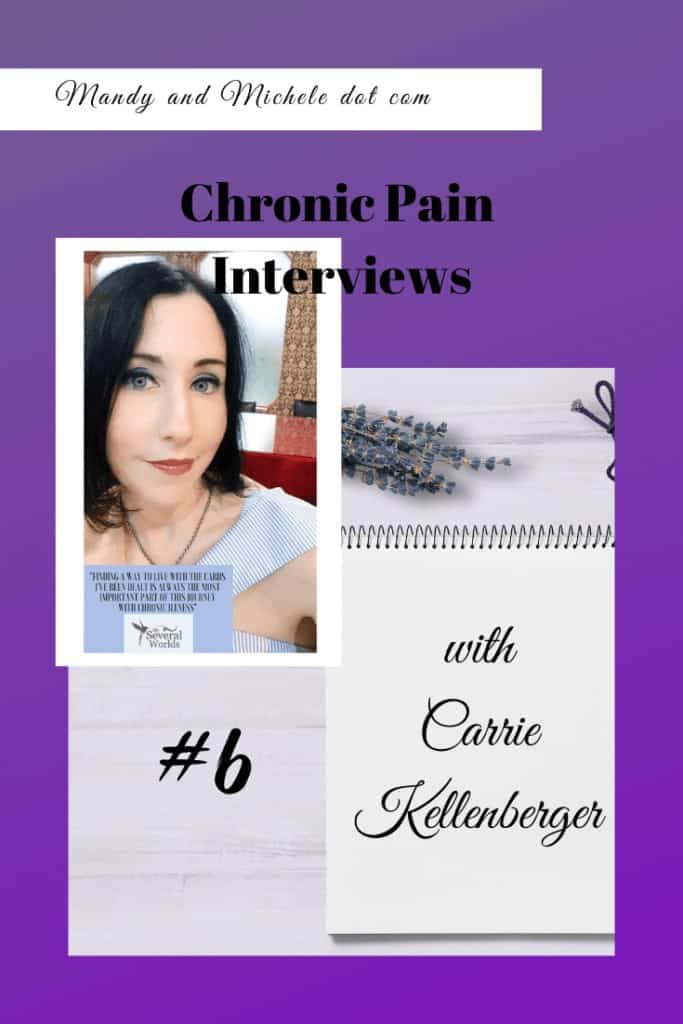
Find Carrie at any of these social media sites
Click on the button below to link up
Legacy Link-up is Live until Sept 30
Carrie is very active in health advocacy and online awareness. She is an admin for a massive group of women with fibro and AS. She has done that for five years and have made strong friendships within the group. My Several Worlds has been listed as a Best Blog in Fibromyalgia with Healthline for the past three years, and Carrie has been recognized as a finalist with WEGO Health in 2020 for their Lifetime Achievement Award.

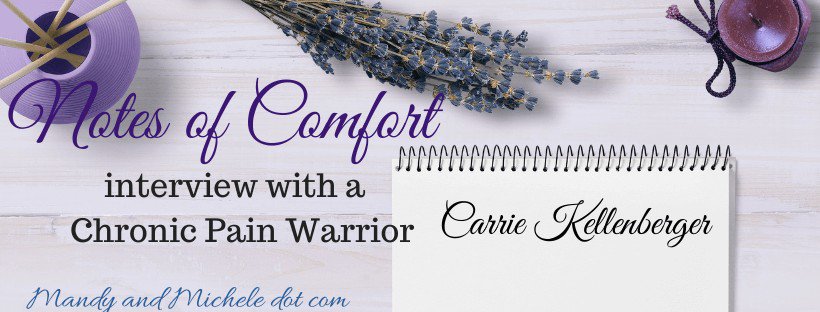








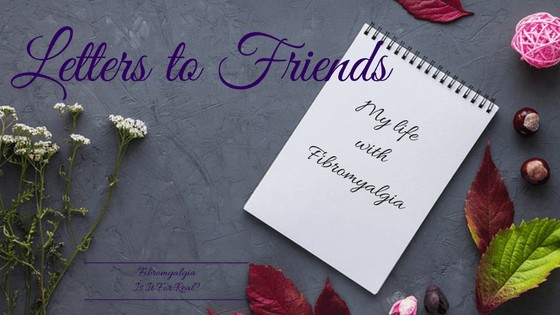
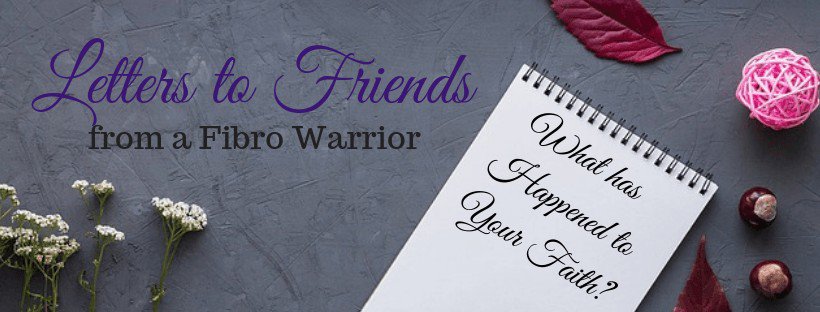
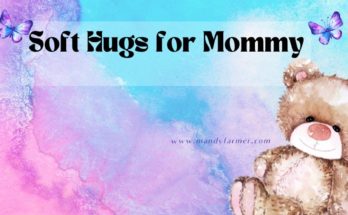
I so appreciate your sharing Carrie’s story. There us hope even in what seems like an impossible situation.
So true. I know in my own circumstance that there was a grieving time as the loss of your life but truly one can find a new life that is fulfilling that may even help deal with the pain.
Thank you Carrie for sharing your story here. I too have found online friends in the chronic illness community that have become so very supportive & encouraging! That’s how I met Mandy too. I have RA & Fibro, along with a host of other issues, so it really is encouraging to hear about other ways of coping and finding new parts of life after a diagnosis. I love your beautiful Ikebana! Blessings to you!
Hi Michele! Thanks so much for taking the time to read my story. Yes, there is always hope. We need to hold onto it and find different ways of coping with what we live with.
I’m not sure if the grieving process ever really leaves. I’ve found that we move through stages with illness as we get further into it. As we get sicker, we go through all these stages over and over again. But the nice thing about it is that we become familiar with it and that makes us more resilient. It gives us better coping skills. I hope that makes sense! At times, I still feel a lot of grief over what I’ve lost. It comes and goes.
Hi Bettie! It’s nice to meet you. Thanks so much for reading my story. Yes, the online community is so supportive. It’s amazing that I have faraway friends who seem to get it better than my own real life friends. I love the connections I’ve made! Thank you so much for such a nice compliment on my ikebana.
This is a skill that was passed down on my mom’s side of the family. My grandmother was President of the Garden Society in Ottawa, Canada. She was an ikebana master and she was often invited by the Japanese Embassy to meet with visiting delegations. My mom grows prize winning peonies and has amazing gardens. Strangely enough, up until three years ago, I was really involved with the Canadian Chamber of Commerce here in Taiwan and I was also meeting Canadian delegations that visit Taiwan. It’s funny how we can end up following in footsteps.
I guess I’ve picked up a lot of skills from both of them, even though my grandma passed when I was six years old. The kenzans that I use in my arrangements (the picks that we spike flowers to) belonged to my grandmother. 🙂 Blessings to you as well!
agreed. The grief comes and goes just like losing a loved one. Thanks again for sharing with our followers
Thank you so much for sharing your story Carrie, and for being so open and honest. And, of course, thank you for being such an amazing advocate for those living with chronic illness – the work you do is tremendous and so important and impactful.
Thanks for sharing so openly as always Carrie, the top traits of an advocate! I loved getting to know more about you and your journey here. Keep on keeping on!
Hi Carrie, Thank you for sharing your story and also the valuable chronic life tips you’ve given. Whether it’s the bath soak recipe and the various other projects and activities you keep yourself involved in when at home and not to mention the fact that all these years you have worked so much too! I know we don’t choose to be inspiring, it just happens, but it’s this chronic illness community that fuels the will to carry on and Carrie, you are one of my top people for that.
Hi Claire! Thanks so much for stopping by. I’m grateful for friends you like you support fully. I hope that I am doing as much for you as you do for me, my friend! You are an amazing advocate and I’m really proud of you!
Hi Sheryl! It takes one to know one, right? Yes, we must keep moving! I’m glad I can move forward together with you!
Shruti, you are so kind! I’ve learned so much from you too. You are one of my top people as well. I bet if we knew each other in real life, we’d be fab friends that would have a great time together. (Seated, of course, and enjoying the talks!)
HI Carrie,
Thank you so much for sharing your story! That openness and honesty are so important, and I love your suggestions!
Your flower arrangements are works of art!
I really appreciate these insights into your experiences.